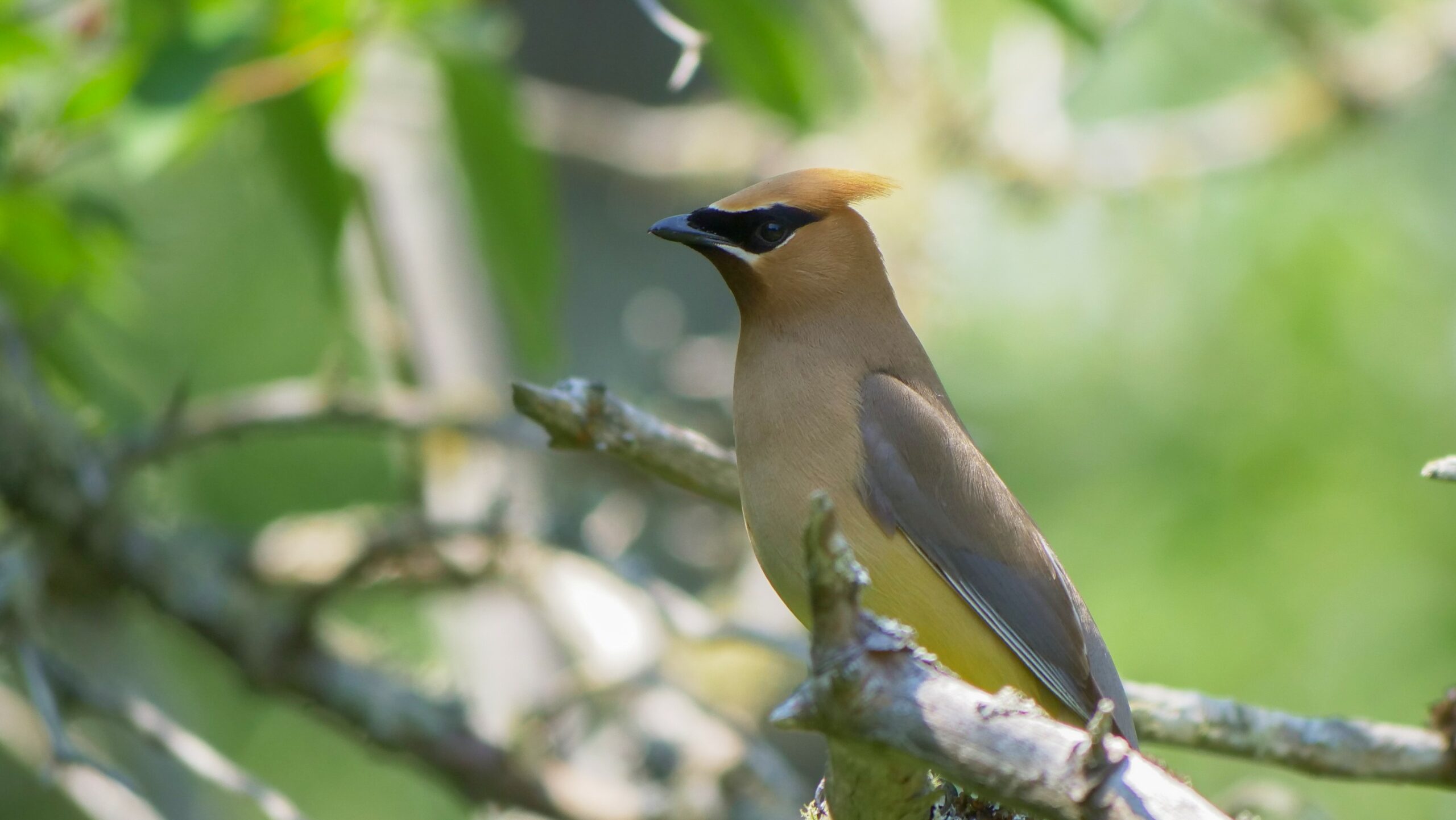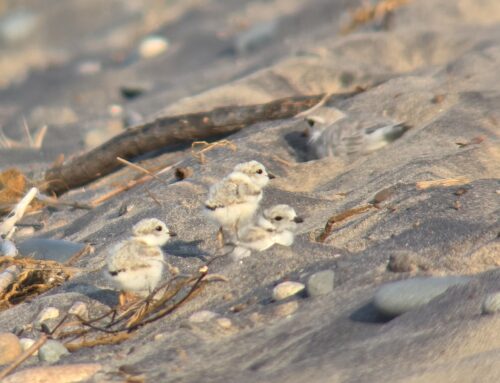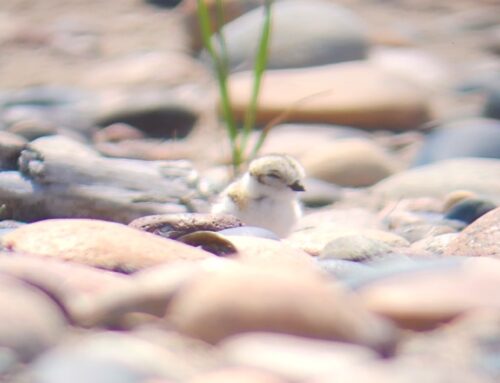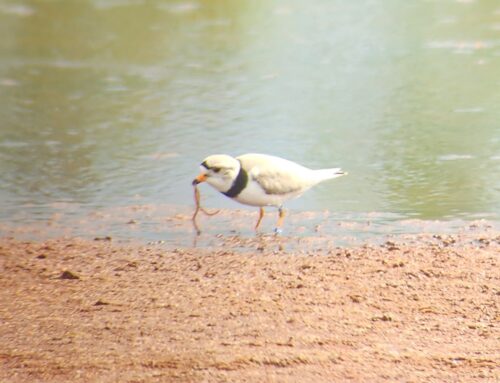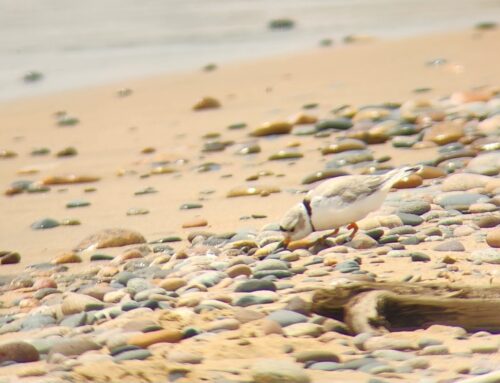It’s 7 or 8 p.m., and I’m listening to the sound of my hiking boots crunch against the rocks and sand with every step. The sky is showing its characteristic amber glow, a trait which the slowly churning lake water reflects eagerly, creating the illusion of a softly glowing Lake Superior. Though this short walk feels far removed from the rest of civilization, a soft peep a few yards ahead reminds me that I’m not alone. There’s so much to see through my precious binoculars — Sanderlings scurrying along the lakeshore, a Caspian Tern resting in a pond by the water’s edge, a platoon of fluffy Piping Plover chicks marching through the sparse vegetation. If only there was more daylight left.
This is not the story of one night at Whitefish Point but of many. Now, as I prepare to leave the place I’ve called home for the last two months, the surreal feeling of adjusting to a new place is gone, replaced with something more visceral — the feeling of the end of something special. Of course, I’d be lying if I said I wasn’t looking forward to some aspects of my return home. It will be quite nice to live nearer than 50 miles to a large grocery store and to, of course, have some semblance of a social life. That being said, having the privilege of spending so much time in a place as unique as Whitefish Point requires necessary sacrifices, and in my experience, it has been beyond worth it.
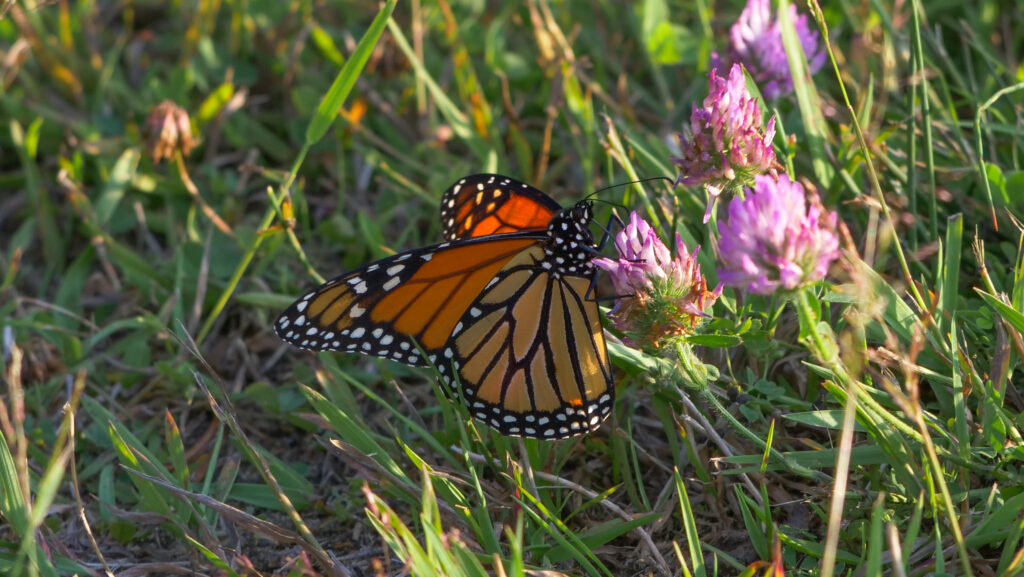
A monarch butterfly perched on a purple flower. Photo by Blake Carlile.
Never before have I held a position where I am able to spend so many of my work hours immersed in the natural world. Whether it was walking the beach in search of elusive Piping Plover chicks, taking measurements for park signage at the hawk deck, or snapping photos along the crisscrossing trails of WPBO’s dense forest, it was surreal to see this complete immersion in nature become a necessary part of my daily routine. It’s been equally fulfilling to feel as though the work I am doing here is genuinely making a difference. Through the educational signs I have designed, the images I’ve created, and the conversations I’ve had with visitors, I feel as though my work this summer may truly benefit Whitefish Point and its avian inhabitants.
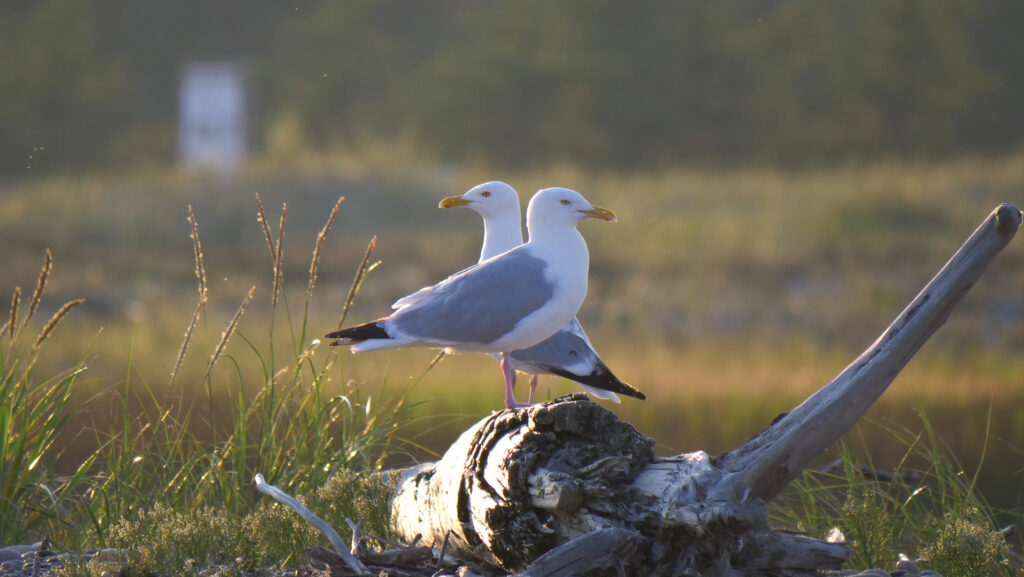
Two somewhat regal-looking Herring Gulls. Photo by Blake Carlile.
As a visitor, you can expect to see new educational signage at the hawk deck, waterbird shack, and at the back of the Owl’s Roost gift shop adjacent to the bird feeders. The signs will hopefully be posted within the next few months. You can also expect to see several video projects published in the near future. My photos, through these blogs and WPBO’s present (and future) social media posts, are available for all to enjoy.
As I prepare for my long trip home, I am certain that my favorite moments from this summer season will stay with me long after my wheels find California roads. Whether it was my boisterous welcome to the Point courtesy of over 300 noisy Blue Jays, my many face-to-face encounters with our persevering Piping Plovers, or seeing my first glimpse of an Indigo Bunting, these moments are all valuable, and hopefully the first of many. I’ve learned so much about birds and their unique way of life. I’ve come to love catching small glimpses of their unique mannerisms — whether that’s watching a Cedar Waxwing ferociously grab berries off the nearest fruiting tree or hearing the not-so-quiet “witchety-witchety-witchety!” of a nearby Common Yellowthroat. It’s like I’m being let into their world just a little bit.
With that, I’ll attach some of my favorite short clips from this summer and let the birds do the rest of the talking.
It’s become typical for me to assume a lighthearted, somewhat casual tone while writing these blogs. I believe it makes the topics of nature (and birding) more approachable, as sometimes they are over-romanticized and made less accessible. However, there isn’t much that’s lighthearted about leaving such a special place. Once again, thank you to all who take the time to read my blogs.
For the last time,
Blake Carlile
2021 Summer Outreach Intern
Featured Photo: A Cedar Waxwing takes a break from eating berries. Photo by Blake Carlile.

